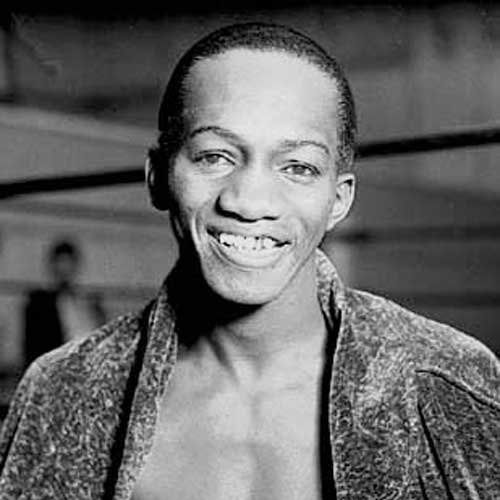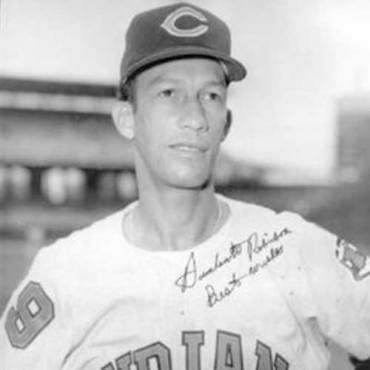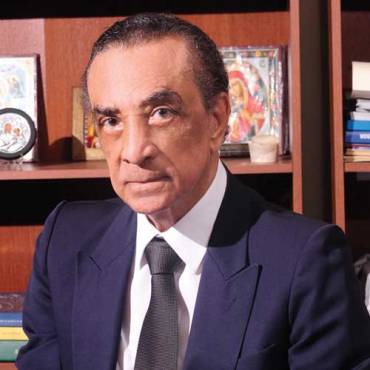Panama Al Brown
Boxer
Brief info
Alfonso Teofilo Brown (1902–1951), better known as Panama Al Brown, was a bantamweight boxer from Panama who made history by becoming boxing's first Hispanic world champion. Brown was a native of the city of Colón.
Brown fought during the early 20th century, a period in which boxing records were not well kept. He is said to have fought professionally 164 times. He stood about six feet tall, an extraordinary height for a bantamweight/featherweight. His long arms contributed greatly to his success in the ring.
Brown was born in 1902 when Panama was part of Colombia. His first real exposure to boxing came when he saw American soldiers boxing when he was a young adult clerk for the United States Shipping Board at the Panama Canal Zone.
 Brown turned pro in 1922 under the guidance of manager Dave Lumiansky. His first fight took place on March 19, 1922, when he beat Jose Moreno by a decision in six at Colon. By his seventh fight, December 13 of that same year, he beat Sailor Patchett by a fifteen round decision, to earn the Isthmus Flyweight title.
Brown turned pro in 1922 under the guidance of manager Dave Lumiansky. His first fight took place on March 19, 1922, when he beat Jose Moreno by a decision in six at Colon. By his seventh fight, December 13 of that same year, he beat Sailor Patchett by a fifteen round decision, to earn the Isthmus Flyweight title.
On September 22, 1923, he had his first fight abroad, drawing (tying) in four rounds with Johnny Breslin, at New York. He very quickly established a presence upon relocating to New York in 1923.
His rise was rapid; a year after his move to New York, The Ring magazine rated him the third best flyweight in the world; two years later, the sixth best bantamweight.
Brown began campaigning extensively across the United States before he suffered his first loss, at the hands of Jimmy Russo on December 6, 1924, by decision in twelve. He would later avenge that defeat, and he beat Davey Abad and Willie LaMorte before being disqualified in the first round against Frankie Murray on July 11, 1926. Despite that setback, he kept on campaigning successfully and, on November 10 of that year, he knocked out Antoine Merlo in his Paris debut.
He enjoyed Paris so much that he decided to stay there for the rest of his life. He became a hugely popular boxer in France, and fought on the European continent 40 times between 1929 and 1934. Over the next three years, he beat several fighters there, including former world champion Eugene Criqui.
An interesting case happened when he fought Gustav Humery, on January 29, 1929. Brown and Humery had previously agreed that they would not salute by touching gloves before the fight, and when the bell rang, Brown struck quickly, breaking Humery's jaw with his first punch and sending him to the floor. With the referee's count of ten seconds, the fight lasted a total of fifteen seconds, one of the quickest knockouts in boxing history.
Brown made history on June 18 of the same year by becoming the first Hispanic world champion in history. He beat Gregorio Vidal by a fifteen round decision to win the vacant world's Bantamweight title back at New York, in front of 15,000 fans.
Brown became a national idol in Panama, and an instant celebrity almost everywhere else in Latin America after his win. Magazines such as Ring En Español were talking about his achievement sixty years after Brown made history.
Soon after winning the title, he lost a ten round, non-title fight to Battling Battalino, another legendary boxer.
Brown retained his title nine times and had countless other fights before a rematch with Hummey that ended in disaster: on May 17, 1934, Brown was disqualified in round six at Paris for using illegal tactics. A riot started and Brown suffered several broken bones and was sent into semi-unconsciousness by fans before the police could help him. Twenty minutes later, the locale where the rematch was held had almost been entirely destroyed.
Panama Al Brown's final record is believed to have been 123 wins, 18 defeats and 10 draws, with 55 knockouts, placing him in the exclusive list of boxers who have won 50 or more fights by knockout. He was the recognized bantamweight world champion for six years and over that time made 11 title defenses against the best bantamweights and featherweights of his era.
Brown died penniless of tuberculosis in New York City in 1951.






Add Comment